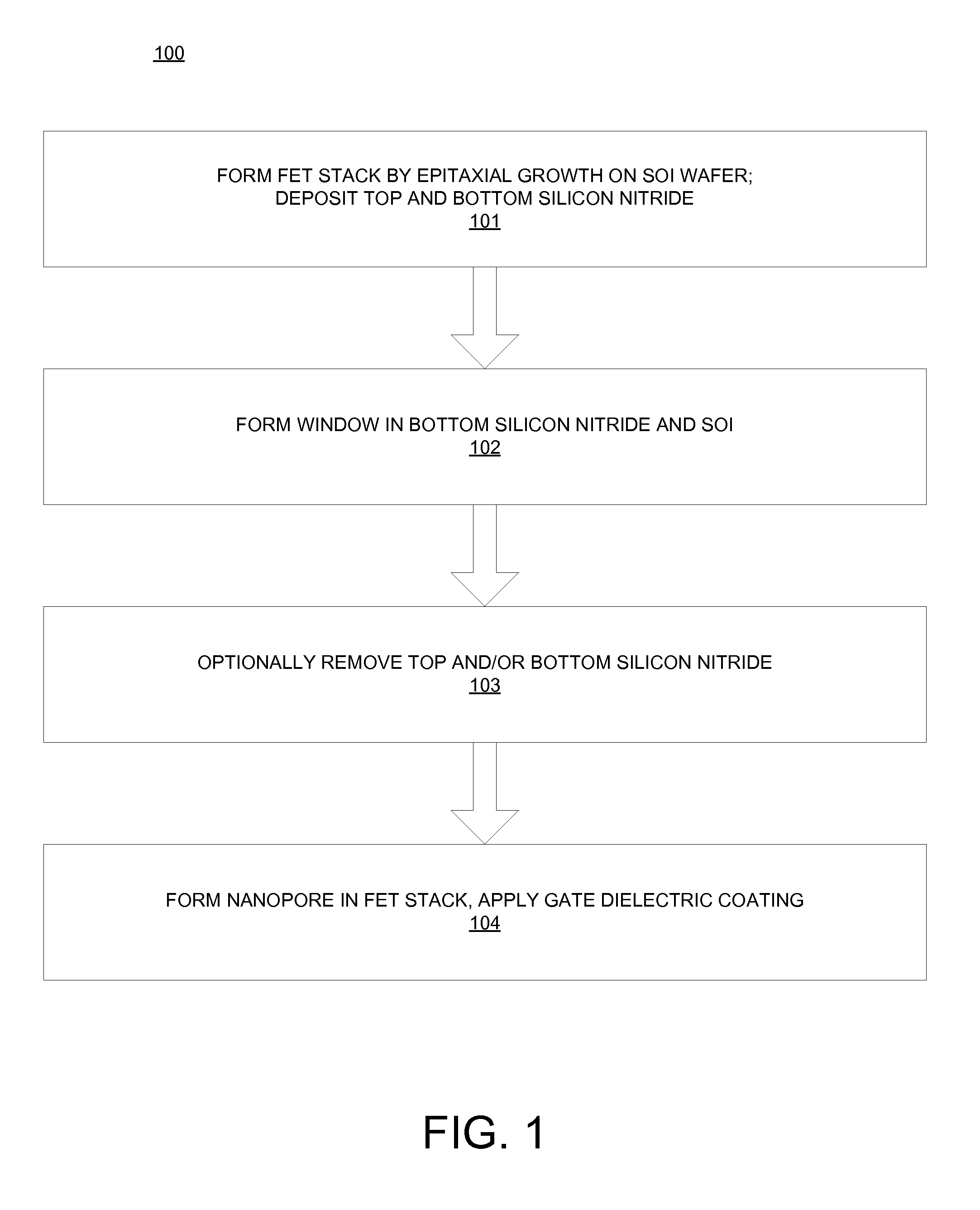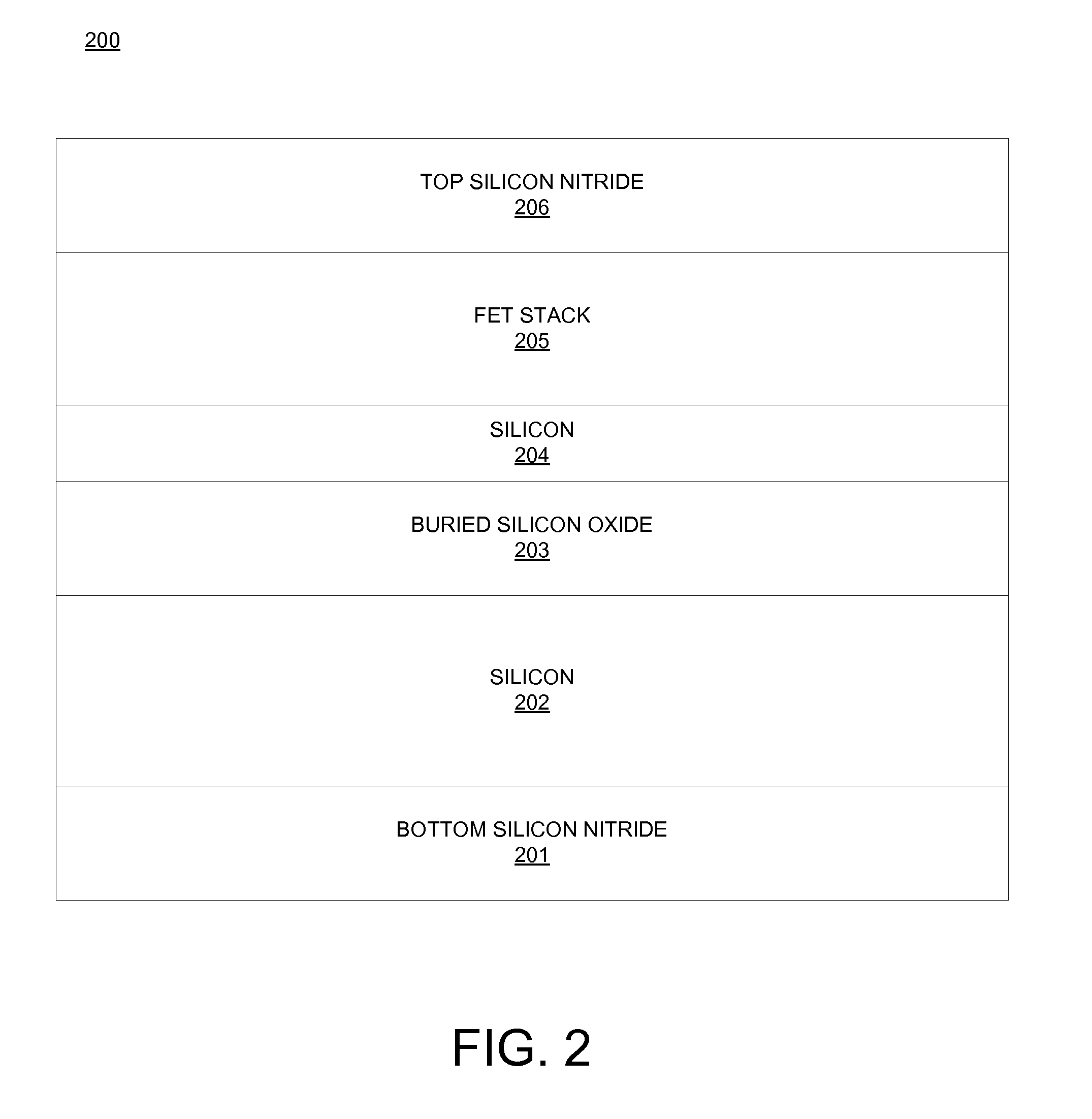FET Nanopore Sensor
a nanopore sensor and transistor technology, applied in the field of field effect transistor based sensors, can solve the problems of laborious and expensive application of coatings, difficult fabrication of such sensors, and inability to cover the sensing surface of sensors
- Summary
- Abstract
- Description
- Claims
- Application Information
AI Technical Summary
Benefits of technology
Problems solved by technology
Method used
Image
Examples
Embodiment Construction
[0024]Embodiments of systems and methods for a FET nanopore sensor are provided, with exemplary embodiments being discussed below in detail. A FET nanopore sensor may be used to detect various types of biomolecules without requiring a sensing surface covered with a biological coating to bind the biomolecules. A FET nanopore sensor may also be used to sequence DNA strands. The FET nanopore sensor may have a relatively short channel length (less than about 3 nm in some embodiments, and less than about 1 nm in some preferred embodiments), so that the sensitivity of the FET nanopore sensor is appropriate for sequencing DNA. The FET nanopore sensor may be fabricated in a manner that results in abrupt junctions between highly doped source and drain regions that are separated by a relatively thin channel region.
[0025]The FET nanopore sensor may comprise a FET stack with a nanopore located in the FET stack. The FET stack comprises a channel region located in between a source and a drain reg...
PUM
| Property | Measurement | Unit |
|---|---|---|
| thickness | aaaaa | aaaaa |
| thickness | aaaaa | aaaaa |
| thickness | aaaaa | aaaaa |
Abstract
Description
Claims
Application Information
 Login to View More
Login to View More - R&D
- Intellectual Property
- Life Sciences
- Materials
- Tech Scout
- Unparalleled Data Quality
- Higher Quality Content
- 60% Fewer Hallucinations
Browse by: Latest US Patents, China's latest patents, Technical Efficacy Thesaurus, Application Domain, Technology Topic, Popular Technical Reports.
© 2025 PatSnap. All rights reserved.Legal|Privacy policy|Modern Slavery Act Transparency Statement|Sitemap|About US| Contact US: help@patsnap.com



